Background:
Sometime in July 2007, Dr. Dabholkar told me, "I have received a letter from the guest editor of 'Shabd' magazine, Meghna Pethe, requesting me to write an article for its Diwali issue. The theme is "Looking back in time". They want an article of up to five thousand words, but I can't write so elaborately. Because that's not how I get involved in my past life. So, please suggest me some points about what should be included in this article." When I met him the next week, I asked, "When do you want to write the article?" He replied saying, "Last week I had the free time of up to two hours. I wrote the article then and sent it to the editor too."
That year's Shabd Diwali issue had published eight to ten articles written by different dignitaries, which I read while traveling. I had messaged Dr. Daholkar saying his article was the best in that section. On two to three occasions later, especially during the publication of his book - 'Timiraatun Tejaakade', I had reminded him to include this article in one of his books. But he was not much involved in that article. So, this article, which remained in the Diwali special issue of Shabd, was reprinted by Sadhana in three different places after Dr. Dabholkar's assassination. But its English translation is being published for the first time today.
If a list of 'World's best shortest autobiographies' is ever curated, I think this freestanding article should be included in that list. The original article can be read here in Marathi.
- Editor, Sadhana
The editor of a magazine asked me to write an article for a section titled 'Looking back at the past'. The letter also mentioned that some other renowned and extraordinary individuals were invited to write for this section. I did feel flattered by this sentence. It further suggested what I was expected to write on, and what I am known for. Now and then, whenever I meet unfamiliar people, I come to know what I am known for.
It’s true that for the last 20 years, I have been active in the movement for Eradication of Superstition. But it is also true that for the last 10 years, I am the editor of weekly Sadhana - a weekly started by Saneguruji. And I must mention that this weekly has been progressing in all respects since then. Even then, if I come across 100 newly acquainted people, 95 out of them seem to equate Dabholkar with Eradication of Superstition. Most of them have not heard of Sadhana, and therefore, Sadhana does not make any sense to them.
I have reached this stage of eminence and reputation not just by tracking a customary reliable road, but by trying many untrodden paths too. For example, I was a national and international kabaddi player. There is only one book in Marathi giving a detailed and systematic account of kabaddi as a sport, and I have written that book. I was honored with the Shivachatrapati Kreeda Puraskar, the highest award for kabaddi.
I have enjoyed being on the kabaddi ground in various capacities as a sports organizer, sports column writer, and commentator for as many as 20 years. The same can be said about weekly Sadhana. Along with the Eradication of Superstition, I am the founder of a big institution for deaddiction, which has helped several addicts. But the editors, I feel, do not want me to “look back” on any of these endeavors of mine.
One reason I can think of is that people from all walks of life, of all ages, rich and poor, educated and uneducated, men and women - all have a certain inquisitive interest regarding faith and superstition. ANiS (movement for Eradication of Superstition), I believe, stirs this interest and links up with them. The feudalist psyche still lingers among the people of our country. People admire and respect the individual more than his organization, and therefore, have equated Narendra Dabholkar with Eradication of Superstition. That seems to be the reason why I am invited to write about my experience.
Conviction and continuity are two aspects that distinguish individuals like us from the crowd; so does the editor believe. She goes a step further and elaborates, "Conviction means not just intellectual clarity. It should move the heart along with the intellect and create a moral thrust compelling action".
I must admit that no such thing has happened in my case. I did my M.B.B.S. and started medical practice and social work - a small organization called Samajwadi Yuvak Dal, with the help of some like-minded friends. Many such small groups called "action groups" increased in Maharashtra during the 70s and 80s. They grew, glittered for a while, and disappeared. So did our Samajavadi Yuvak Dal. It started in 1971 and breathed its last in 1982. We would not like to call this extinction. So we decided to merge with the movement, Samata Andolan.
In about two years, this endeavor too came to a halt. This was the time when the work of Eradication of Superstition began. It was B. Premanand's crusade for promotion of science all over Maharashtra that set it off. B. Premanand led one group in the larger crusade, Vidnyan Yatra, which was planned by many organizations for the promotion of science.
Miracles that the self-styled godmen perform and we now regularly duplicate in all villages, were first demonstrated by B.Premanand. Huge crowds gathered to see them. I sensed that this kind of work can take root in Maharashtra and prove quite useful. But it did not occur to me that I was the one who should take the initiative.
Rashtra Seva Dal was a prominent group in the organizing committee of the science promotion expedition. I requested the head of the committee to take up this work. They did not consider it of much importance.
In those days I was not occupied, as I had given up my medical practice and my organization too had come to an end. People are on the lookout for such unoccupied individuals and recruit them immediately. However, I did not come across anyone who would utilize me. So putting the work and the free time together, I started it off my own accord. There wasn't any incident that could have jolted me into this work as people imagine. A lot of my friends did not approve of my way as an activist. Some of them don't approve of it even now. They think I am wasting my time in demonstrating miracles. So, this is all about my convictions.
The second point made by the editor, viz, continuity applies to me pretty well. But again, this continuity has not been caused by any dedication to the work on my part. Continuity seems to be a stable attitude since my childhood. While in school, I was a member of the Kreeda Mandal. I used to religiously visit Kreeda Mandal every evening, all 365 days of the year. I used to sprinkle water on the ground and carry out all similar menial jobs there. During these days, I did not even once loiter on the streets of Satara or go to a 6 o'clock cinema show.
Again, when I was selected to be the editor of Sadhana, the ANiS movement was running at full speed. So, those who entrusted Sadhana to me were somewhat apprehensive of whether I will be able to dispatch the issue every Tuesday for printing, get the binding of the printed issue done on Wednesday, and post all the copies on Thursday before noon - week after week, without fail. A break in this practice amounted to inviting a disaster. Would it be possible considering my tight schedule of crisscrossing rural and urban Maharashtra? But this is a story of the past. It is now ten years, during which, 500 issues of Sadhana have been released without breaching any of the above routines.
The editor also suggested that I should look back on my writing and speak about cautiousness, anxiety, pride, and amusement in the past that has been expressed in it. Now, it is natural to harbor some pride in mind, but not anxiety, and not a trace of pondering over the past. It's simply not my nature.
Many awards have come my way and a few of them are very precious. For example, I was awarded the Best Activist of the Decade with prize money of Rs.10 lakhs by the Maharashtra Foundation of America last year. But not a single award, including this one, is showcased in my home. I don't possess that kind of mind that muses over the past.
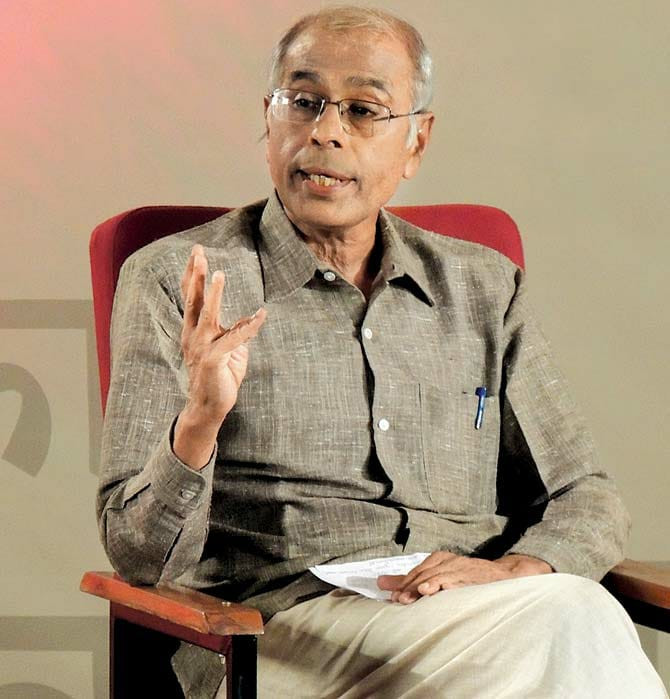 Cautiousness, however, I do possess. You may call it restraint or temperance. I never adopted a do or die stance on the playground or in my social work. So, in my case, earlier conjectures that all the surrounding systems falling flat or proving wrong did not occur. Maybe, I never undertake any big deals or put all at stake. So, I never lose everything. I do not believe in tough belligerent action; it is not my nature. I believe in perseverance and adopting pure and clean means to achieve the goals, and that is my method of work.
Cautiousness, however, I do possess. You may call it restraint or temperance. I never adopted a do or die stance on the playground or in my social work. So, in my case, earlier conjectures that all the surrounding systems falling flat or proving wrong did not occur. Maybe, I never undertake any big deals or put all at stake. So, I never lose everything. I do not believe in tough belligerent action; it is not my nature. I believe in perseverance and adopting pure and clean means to achieve the goals, and that is my method of work.
I had no experience of having been insulted, deeply enough to touch the core of my heart. I don't believe anybody can do that to me. At times, I might have felt a little upset, sad, or disappointed by the behavior of someone facing me. But I never felt insulted, nor was I scared because of the threats heaped on me.
Narendra Maharaj has instigated people in his public speeches to sever my limbs from my body; accused me of accepting bribe from Christian Missionaries for destroying the Hindu religion. The Shivsena and BJP MLAs have demanded the banning of ANiS, and my expulsion from Maharashtra state in the legislative assembly.
Whenever newspapers or channels asked me for my reaction, I would only say, "Oh god of their faith, forgive them, for they do not understand what they are speaking! I fasted for ten days so that the anti-black magic bill be passed. But what was expected, did not happen. When caught in such an impasse, many are perplexed. Who will take the initiative to end the fast and how? Who should speak vehemently on that occasion, etc.? But I did not need any of these gimmicks. It was me who started the fast. So, it was up to me to end it, and so I ended it.
That is all.
Many people asked me, "Aren't you frustrated that for no reason the bill is being postponed for the last 16 years?" Of course, I am disappointed with this delay. But at the same time, I am well aware of its limitations and the precincts within which we can put it to use. So, neither was I hurt to the core by this inexcusable delay, nor could I be provoked into some strong reaction to win. In the field where I am engaged, one has to measure the success of his work not in terms of decades, but terms of centuries.
Thus, there were no insults. The honors and tributes, I honestly think, were more than what I deserved. I know that any decision taken hastily in an inattentive moment can cause a lot of damage, especially in such a sensitive field where I work. So far, I have been able to avoid blunders. But it can happen any time because of the sensitivity of the field of work, and the shrewdness of my opponents.
Just one example: "In Shanishinganapur, the houses do not have doors and miraculously, no robbery occurs there. Since you don't believe in miracles, what can you say about this?", asked one newspaper representative. I said, "Robbing (in that place) will be our responsibility and punishment is that of God. Neither the police nor the residents should be allowed to interfere. Under these conditions, this phenomenon can be tested."
This was a purely confidential response to his question given in jest. But the newsagent got it printed with a sneaky title, "Dabholkar says, he is going to lead a movement", "Let us go to Shanishinganapur and steal". The whole Nagar district was agog and we had to suffer the consequence.
I am now 62 years old, but I have yet not experienced fatigue. Our movement is not robust enough, and at times, the feeling of hopelessness lurks in the mind. The ups and downs, anger, and kindness that is seen in all movements - occur in our movement too. But I have never experienced the utter exhaustion that the editor was talking about. In short, both enchantment, and later on its disenchantment, have stayed away from me. I have no experience with insults, blunders, fatigue, confusion, etc. And on the contrary, the honor and recognition that I have received are much beyond what I deserve.
The editor also asked me, "When you feel utterly tired, who do you think of, and who revives your energy and strengthens your resolve to march forward? " There is no question of tiredness in my case as I said earlier. However, my limitations are becoming more and more obvious. I can't see any way of widening and increasing the scope of my mission while remaining true to it simultaneously. Nor do I see anybody who can guide me.
The only exception is Mahatma Gandhi. This great man has beckoned me time and again. But my study of Gandhian ways is practically nil. Regardless, I feel assured that his thoughts and deeds will help me break out of this deadlock. This old man, who seemed so simple and easy, is very difficult to comprehend; adopting his ways is still more difficult. The moderate man in me is simply incapable of giving up all that I have achieved so far and mustering the courage to follow the path led by him. So be it.
Since the editor wants me to look back at this stage, I put my pen to paper here. Whether I have been able to do justice to the topic is left to the readers to decide.
Eradication of Superstition is not a new thought for the people of Maharashtra. It stands on the firm foundation laid down by our social reformers. But the awakening that occurred then, ceased after independence. The magazine, Kirloskar, had conducted a very successful movement from 1935 to 1945 against Buvabaji, and on the other hand, against false notions regarding God and religion. Dr. Babasaheb Ambedkar was thoroughly examining the contents of the Hindu religion. Sant Gadage Baba held discourses with the masses on reform in thinking- an important constituent of which was superstition. All this practically came to a halt by 1956.
There was also another thought - superstition will be automatically eradicated as education becomes available, spreading science and modernization in free India. The thought opposite to this was gaining strength gradually, and in the 70s and 80s the sale of the magazine, Shri, rose to lakhs and above. This magazine showed so-called real photos of ghosts, and the jewel Chintamani, which gave a bit of gold every day. Many such unbelievable stories were published and became interesting topics of discussion.
In such an atmosphere, B.Premanand, a rationalist from Kerala toured the length and breadth of Maharashtra. He held many demonstrations in which he inserted a trident through his tongue, ignited fire by chanting Mantras, captured a ghost into a pot, obtained a golden chain waving his hand in the thin air, etc. Even today, people are smitten by miracles. Here it should be noted that demonstration of the miracles is not the same as magic shows.
A magician brings all his gadgets and instruments and presents his tricks. A Baba does not bring things with him but gets them from his hosts. He takes some red Kumkum powder from the household he visits and turns it into a black powder called Bukka, or yellow turmeric powder. The magician presents his art; the godman demonstrates his supernatural powers. People's fondness for miracles helps in building an organization. However, ANiS has always taken precautions to keep miracles away from the work of Eradication of Superstition.
Performing miracles was, and still is, a strong point for Samiti. But superstition of all kinds is the main subject of study and work for ANiS. The Samiti has unraveled many puzzles like automatic movements by objects, clothes getting torn or catching fire spontaneously, signs of marking nut appearing on the body, etc. The Samiti also examined the phenomena of possession by a deity or ghost and provide a psychological explanation of what these things are and why do they occur.
Samiti also proved that astrology is not a science when scientific criteria are applied. It exposed different forms of Buvabaji and provided a sociological appraisal of it. People are extremely eager to know all about such occurrences. This helped the Samiti to make a place for itself in their hearts. The Samiti, at its own risk, critically examines faith and superstition. One man's faith appears to be a superstition to another man, and what seems to be a sheer superstition to the third one, happens to be the firm unfaltering faith of the fourth man. It is not at all easy to keep a public discourse alive in such matters. Such churning of thoughts is now possible in Samiti's activities.
Faith is inevitably related to religious faith in the first place. So, eradication of superstition is made to look like eradication of religious faith and a battle against god and religion. It is argued - "If God and religion are scrutinized, morality supported by religion will collapse and so will the society that has lost the support of morality. So, beware of eradication of superstition for it is in fact eradication of morality." We have adequately dealt with this constant propaganda against us and have dug our heels in.
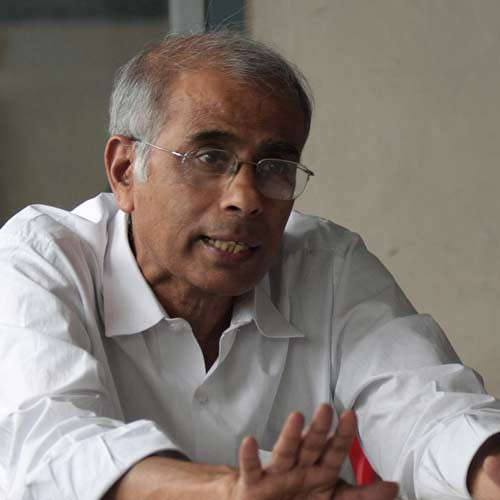 Every Indian citizen is bound to adopt scientific temper as is stipulated in our constitution. It is an important value in education. However, not only the common man but even those who work in the field of education have no clear idea as to what is scientific temper. Samiti has undertaken the work of explaining it to the people in the language they understand and propagating it among them. It is enough work for any organization to deal with issues like different types of superstition, the psychology that produces them, faith and superstition, scrutinizing god-religion-morality, and propagation of scientific temper.
Every Indian citizen is bound to adopt scientific temper as is stipulated in our constitution. It is an important value in education. However, not only the common man but even those who work in the field of education have no clear idea as to what is scientific temper. Samiti has undertaken the work of explaining it to the people in the language they understand and propagating it among them. It is enough work for any organization to deal with issues like different types of superstition, the psychology that produces them, faith and superstition, scrutinizing god-religion-morality, and propagation of scientific temper.
But the coherent thought emerging out of it logically leads further to rationalism, secularism, eradication of caste system, and social justice. Samiti has already moved forward in this direction. In short, the process that started with the fascination for miracles has now reached up to all boundaries of all-embracing and far-reaching social change. I am not aware of any Indian organization engaged in this kind of work, and if they have made so much progress as ANiS did.
The strength of our work lies not in its thinking and philosophical stand, but in its day to day activities, the various innovative plans and programs it organizes. The programs in the list that follows are of course carried out by all workers together, but I participate in all of them personally and carefully watch them. Samiti has systematically devised a method of detecting the incidents of Bhanamati, discovering its origin and causes, giving psychological support to the person who causes it and finally putting an end to the fearful occurrences. Samiti has successfully tackled and stopped 250 incidents of Bhanamati without a single failure. In hundreds of confrontations against the godmen, our activists have put their lives at stake and made the godmen wind up their business.
The Dakin custom prevailing in the Adivasi areas - where an unlucky woman is accused of causing all the ills that occur in the village and branded Dakin, is harassed and at times killed- is caused by superstition and vested interests. Samiti began a movement against this evil three years ago, in Nandurbar District. At that time, people's movements, NGOs working in that area, administration - all were convinced that the Dakin Custom is so deeply rooted in the minds of the Adivasis that confronting it will provoke their wrath. Samiti did not deter from its goal and initiated a movement against this cruel custom. It has reached a stage where it can confidently spread this movement to ten other Adivasi areas in Maharashtra.
The challenge to miracle mongering godmen, to perform miracle under scientific conditions, initially was one lakh rupees. This amount is steadily increasing. The prize money of ten lakh rupees that I received last year for 'Best Activist of the Decade' is added to this fund. The sum now stands at Rs.21 lakhs. Along with confrontations, Samiti undertakes many other movements so that people can mentally prepared to accept change. I fully and wholeheartedly participated in all such movements. One movement, Shodh Bhutaacha, Bodh Manacha (searching for the ghost, enlightening the mind), was conducted in the Konkan area. Four groups performed, in all 167 programs and we reached 3 lakh people through them.
Another movement was Chamatkaar Satyashodhan Yatra, challenging all godmen to perform miracles under scientific conditions. The Yatra (pilgrimage) covered the whole of Maharashtra twice. In Goa, Belgaum, and Konkan area, Sarpa Yatra was conducted to educate people regarding snakes and first aid for snakebites to remove their superstitions regarding snakes. The Bhanamati in Marathwada is of a different type. There the afflicted women huff and puff and bark like dogs. At times many women together start huffing and puffing and barking. In the unbearably hot month of May, we combed entire Marathwada in 8 groups performing 250 programs to attack this menace of Bhanamati. We could not put a full stop to it but the number of incidents has reduced greatly.
The Vaidnyaanik Janiva Prakalpa is meant to educate teachers in the Eradication of superstition. Workshops are held to train teachers in a regular curriculum to be taught to their students. Teachers teach the content to the students and give them a test. About 10,000 teachers and 3,00,000 students have benefitted from this project. Samiti has assembled Vidnyaan Bodh Vahini (science education on wheels), which is equipped with all that is required for science education. Wherever this van reaches, it becomes a festive time for students. This program has been quite successful in Adivasi Ashram schools.
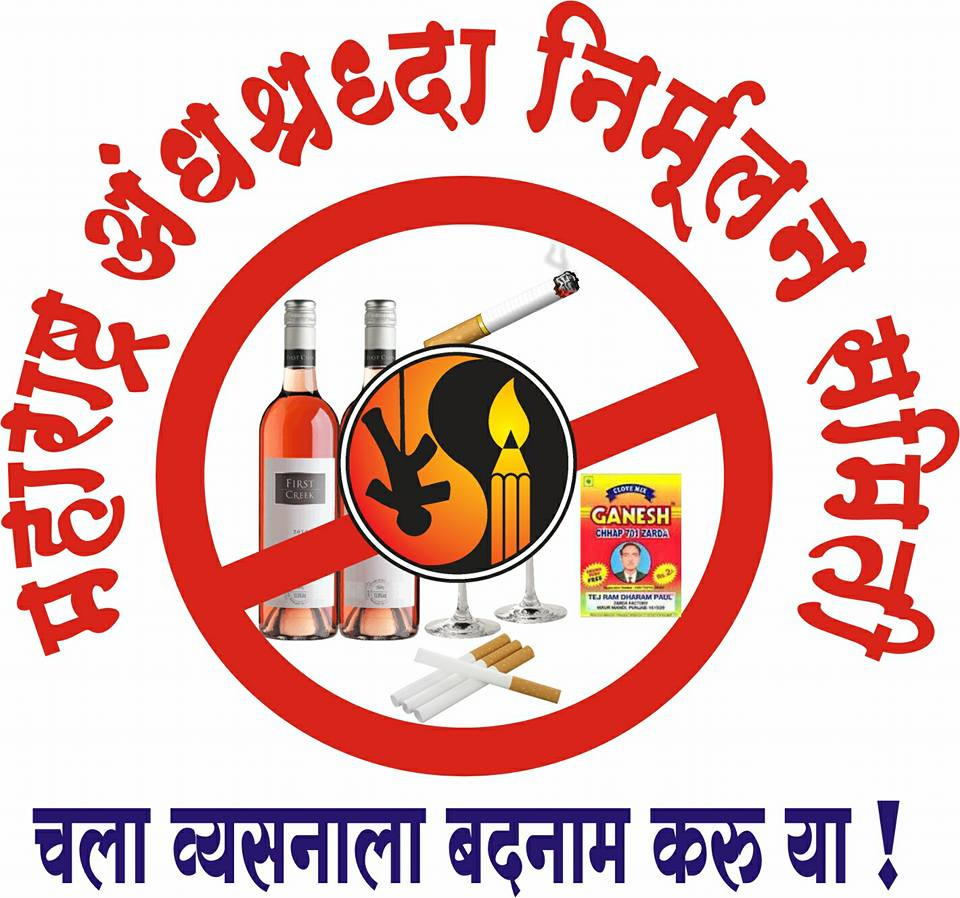 The Samiti has conducted many conferences at various places in Maharashtra. Samiti wants the government to give up its pro liqueur producer policy and adopt a policy of total deaddiction in its place. Our second demand is that the test for HIV positive/negative is made mandatory before marriage. The appeal for these demands, signed by 100,000 people, was presented to the then chief minister, Sushilkumar Shinde - all in vain as expected.
The Samiti has conducted many conferences at various places in Maharashtra. Samiti wants the government to give up its pro liqueur producer policy and adopt a policy of total deaddiction in its place. Our second demand is that the test for HIV positive/negative is made mandatory before marriage. The appeal for these demands, signed by 100,000 people, was presented to the then chief minister, Sushilkumar Shinde - all in vain as expected.
Samiti is spread in 180 branches all over Maharashtra. Since our programs intended to awaken people, and always have a silver line of entertainment, they are very much in demand. As every branch organizes about 10-12 programs annually, the total number reaches 2000. ANiS's line of reasoning requires a proper grip on the subject with a sound and coherent argument. If your fluent oratory and honest concern reach the hearts of the people, it becomes very effective. I have myself benefitted a lot from all these boons.
In the last 20 years, I must have given thousands of lectures. On many such occasions, the lecture is followed by a question-answer session. More often the questions are intended more to expose Dabholkar than to satisfy curiosity. They try to trap me. But so far, they have not succeeded. So far, there has not been even a single occasion when I was not able to answer a question relevant to the subject at hand; they could not trap me. I had to answer many crooked questions asked on different channels in various programs, and many people feel that I have given them fitting answers.
The programs of open tête-à-tête between Dr. Shriram Lagu and myself became especially popular. The stand Dr. Lagu adopted was that God is the initial superstition that spawns a whole lot of other superstitions. So unless you strike at God, eradicating superstitions is not possible. I too am an atheist, but my stand is not so hard-hitting like that of Dr. Lagu. And the Samiti believes that it is not necessary to be an atheist to participate in the work of eradicating superstition. Samiti is neutral as far as god and religion are concerned. Dr. Lagu calls it escapism. I feel that Samiti's stand aligns with the secularist stand adopted in our constitution. 100 such programs of conversations between myself and Dr. Lagu stimulated the ability of reasoning in many listeners.
The Maharashtra Vidhan Sabha has passed the bill against Black Magic. Yet it has not become a law. Vested interests are busy opposing it for one reason or another and in misleading people through their vicious propaganda. These people have approached the government and requested them to ban me from speaking on the law.
Samiti wants that animal sacrifice in front of deities in public view should be banned. To stop this senseless killing of animals, Samiti organized over 150 Satyagrahas at various places. To grant entry to women at the Shanishinganapur Devasthan, I participated in the Yatra and Satyagraha and was imprisoned for it with many of my colleagues.
Each year in Maharashtra, at least one crore families install a Ganesh idol in their houses. These idols, made of plaster of Paris and painted with poisonous chemical colors are immersed in flowing water, and start a chain of environmental destruction. To avoid it, Samiti accepts Ganesh Idols that are ceremoniously taken to the place of immersion and immerses them at some convenient water source. In the first two years of the movement, Samiti collected 40,000 idols; but in the last two years, the Hindu Janajagaran Samiti vehemently opposed us. Since the intervention by the government to stop immersion in flowing rivers to save the environment, things are improving again. Yet, we cannot avoid court cases already launched against us.
In one demonstration against Nirmala Mata, famous for her Sahaj Yog, devotees of Nirmala Mata beat us and launched a criminal case against us. I published one article against this in one of my books. She launched a defamation case against me in the Delhi High Court. The story goes on and on. I am aware that this is not the place to present the whole Balance Sheet of Samiti's work. But looking back gives us the satisfaction that we could do so much in such an adverse atmosphere and thus rightly feel proud of ourselves.
This work of eradication of superstition started in 1985. But then, it was not a proper organization. Some like-minded persons carried out the work which was dispersed at various places in a loose network. In 3-4 years, it became impossible for them to carry on. Though I was not connected with these groups at that time, since 1971, I have been involved in the various movements of Social Change, fighting for Social Justice, economic exploitation, corruption, and politics. I came to this movement of eradication of superstition in 1985. I had not felt the need and urgency of it at that time. So as soon as bickering began to come to the fore, I decided to quit. I don't know what would have happened had I quit the organization. But I certainly would have not been there.
My Pune colleagues argued, "We have the intention to work, and you are the one who possesses a commanding oratory, and can spare time". Thus I became the Co-ordinator for two years and would continue if the organization seemed to take root. This took place in 1989. Two years later I was elected as the working president. Strangely enough, those who put pressure on me to lead gave up the work one by one, while I alone stuck on. We had 17 to 18 branches then, and now have a network of a large number of activists working in 180 branches.
Recently an eminent elder social worker said to me, "You seem to be doing well. No bickering in the organization. Although not an NGO, you face no financial difficulties. The media too supports you."
Though I was amused by his remark, I began to ponder, "Being such a huge organization, why is there no bickering, no quarrels, no disparaging remarks, and no antagonism?"
With this reassuring atmosphere, the love of the co-workers, their confidence in me, I was certainly in an enviable position. I have been the president from day one. After 3 years I wanted to step down but could not. Then, they decided to allow me to step down once the anti-black magic bill was passed. It is being postponed time and again, and I remain the working president. Not that I will retire after stepping down, for I am blessed with some rare abilities, such as, organizing work, keeping cool, perseverance, enviable health, and the ability to travel and work continuously without rest. Of course, age counts, and the picture will eventually change. But I will try my best to remain alert and active.
During the last 18 years, we never experienced economic difficulty because of our unique way of work. The organization does not have an office of its own. All the branches are self-supporting. They earn a little from the programs they organize, self-study tests, donations from members and sympathizers, and some percentage out of the advertisements they get for the magazine. I believe in what Gandhiji said – No good work can suffer for want of funds.
We get considerable publicity and people think we hanker for it. But I always remind my co-activists that an organization can rarely remain in the public eye for such a long time; and we should be prepared for being ignored eventually.
Our work is publicized for three reasons. First, the activities for the eradication of superstition are intrinsically newsworthy. Secondly, people and the media in Maharashtra believe that our activists are honest. The third reason, I must admit, is that we maintain proper relations with the media, take care to give them correct and honest accounts of our activities in time. Whenever any incident connected with Eradication of Superstition occurs, I write a report on it and most of the main newspapers immediately publish it.
The real test I and my organization had to pass was altogether a different issue. Whenever an organization is founded, people start casting aspersions on it - to which caste do the activists and the leaders belong? As we gathered strength, the discussion about the castes became more aggressive. Some accused me of trying to destroy religion, and therefore, they asked for my expulsion out of Maharashtra. Others who called themselves progressive and secular accused that being a Brahmin, my real intention is not eradicating superstition, and I am not capable of it. That I have a hidden agenda, a Brahmanic plot for deceiving the public.
This caste-ridden psyche is illogical but it is made to sound logical. A venomous attack of this sort could harm any organization. But we remained unscathed - not because all the exploitative characteristics stuck on to my caste do not apply to me, but because of the inclusiveness of the organization depicted in the vast membership encompassing all castes and sub-castes existing in this state. Caste was never considered while electing office-bearers so that sticking any caste label to the organization is impossible and does not work. I have no precise answers to the questions like - How could we spread the organization so wide, without any bickering? How can we get unstinted support from the media? How do we manage with such meager finances? How do we remain aloof from the caste-ridden psyche prevailing here?
But I can mention a few possible reasons. Our organizational structure, setup, and working are genuinely and intentionally democratic and decentralized. Another reason, more important than anything else, is that the volunteers join our organization because of their intrinsic motivation; they feel suffocated in the superstition-ridden surroundings and do not know how to face it. They find a true enlightened path in Samiti's work. So, strengthening the organization and spreading it becomes their internal need. They strive to protect the organization from petty quarrels, caste biases, and penury.
Since the inception of the Samiti, I have been the working president and am considered the other side of the ANiS's coin. But I am completely ignorant of how the Andhashraddhaa Nirmoolan Samiti became so strong, healthy, and widespread. I did not play any particular role in this. So many people have helped me of their own accord. It won't be proper to disclose their identity. Many advocates have come to my help, free of charge, whenever law-suits are launched against me in various courts. The eminent actors, Dr. Shriram Lagu and Nilubhau Phule consider themselves as our Bandhuva Majdoors, for we can count on them whenever we need their help and extract work without remuneration. My wife, my brothers and sisters, my children all - offer unstinted help to me.
 In treading this path, I avoid reacting to criticism and refrain from entering the clamor of accusations and counter-accusations of the blame game. I also refrain from taking legal action for defamation against anybody. I do not want to embroil the organization with lawsuits. I do not know whether I am right, but one thing is sure that avoiding to react never puts you at any loss. When one builds up his image in people's minds through such a long march, he becomes immune to petty accusations.
In treading this path, I avoid reacting to criticism and refrain from entering the clamor of accusations and counter-accusations of the blame game. I also refrain from taking legal action for defamation against anybody. I do not want to embroil the organization with lawsuits. I do not know whether I am right, but one thing is sure that avoiding to react never puts you at any loss. When one builds up his image in people's minds through such a long march, he becomes immune to petty accusations.
Other than the work of ANiS and the weekly Sadhana, I do not do anything else. This has rendered me a single-minded person. For years, I have not been on the Kabaddi ground, not seen a picture or a play, no outing, not even television. I read only what is needed for my work. This is a deliberate atrophy of personality and I am aware that people close to me are disturbed. But for the present at least, I can't help it. The most significant aspect of it is that I derive pleasure from it. I never feel bored or exhausted. People around me change, the thoughts change and the activists keep striving like me - forgetting everything else. I tell my co-workers, "Don't work out of obligation to the society; don't carry any such burden on your head, just enjoy your work. Work only as long as you derive satisfaction out of it."
We have raised a new issue regarding the content of secularism. That is somewhat different from the prevailing progressive concept. One view says that the administration ought to put secularism in practice. The other concept maintains that secular politics is impossible as long as the economy remains unstable. So, measures to stabilize the economy should be given priority, informing the toiling masses during the process. I prefer to put it as: the umbilical cord of secularism reaches right up to the thoughts of Mahatma Phule, Viththal Ramaji Shinde, Mahatma Gandhi, and Dr. Babasaaheb Ambedakar. All these social reformers made the anti-public religion turn and face the public. This will enrich the content of Indian secularism.
Eradicating Superstition is not isolated work. It is necessary to unite it with the larger comprehensive social reform movement. But the links between these two movements are not in place as yet and we seem to work in isolation. So we should strive to avoid single track mindedness amongst the workers. The activists of the Samiti are constantly under public watch, much more than other organizations. How they behave? Do they walk their talk? But very few people can follow it. But we - ANiS as an organization, and I as an individual - are honestly trying our best because the moral fiber of our character is our strength and people seem to believe in us.
Many individuals agree with our principles and policy, but they do not join us because putting those principles into practice requires a lot more courage than they can muster. They cannot afford to antagonize their family and relatives. The poojas to be performed and vows to be fulfilled require both husband and wife to carry them out together. Refusal to cooperate will disturb the peace in the family. Gopal Ganesh Agarkar put his principle very succinctly - "Mere adding to your erudition is not enough. One must have the courage to act accordingly." Next, he adds, "I will tell whatever is right (whatever needs to be told) and do all that I can."
I imagine this chain of social change as - Thought as the first step- then the articulation of this thought- its propagation - and then putting it into practice. The next step would comprise of building a union that amounts to practicing the principles collectively and finally confrontation to bring about change where the Samiti needs a change. Sowing seeds of reason in the mind is not an easy job. However, reason uttered repeatedly does take you a step ahead. The utterance converts into a movement. If people involved in the movement practice what they propagate, the movement culminates into a union which is a good thing to happen. Moreover, if the union jumps into a struggle for change, nothing like it. But climbing up these steps exhausts you considerably. I am treading this path with whatever ability I possess, knowing fully well that it is endless.
- Dr. Narendra Dabholkar
(Translated by Suman Oak)
Read original Marathi article: एक न संपणारा प्रवास
Tags: narendra dabholkar dr narendra dabholkar autobiography weekly sadhana suman oak autobiography article dabholkar Load More Tags




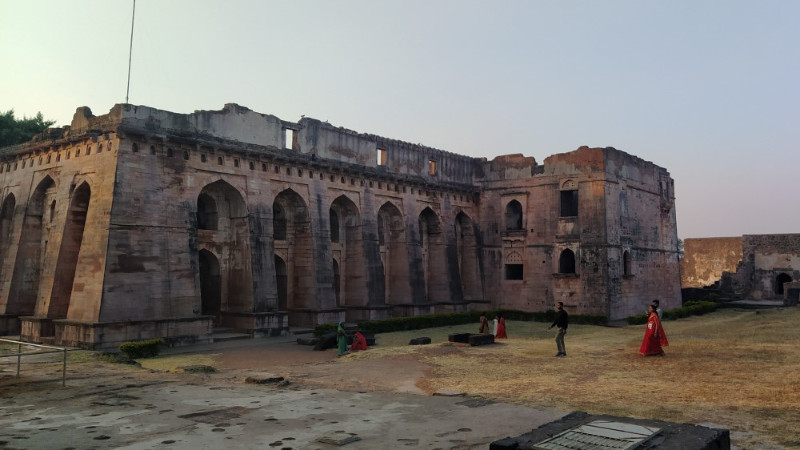
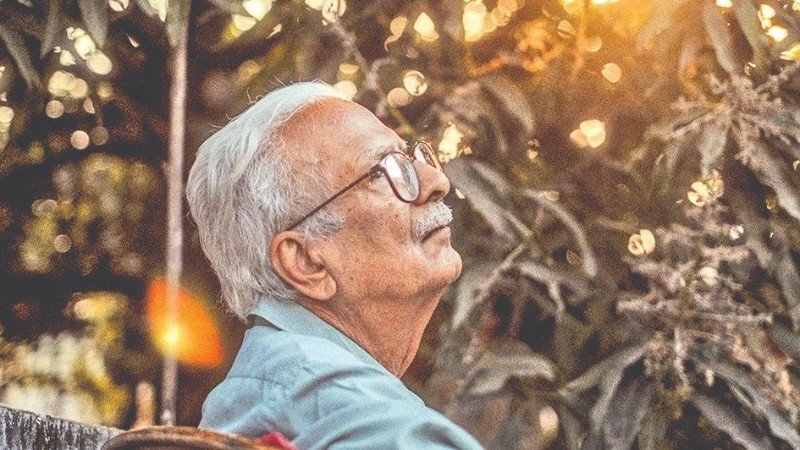
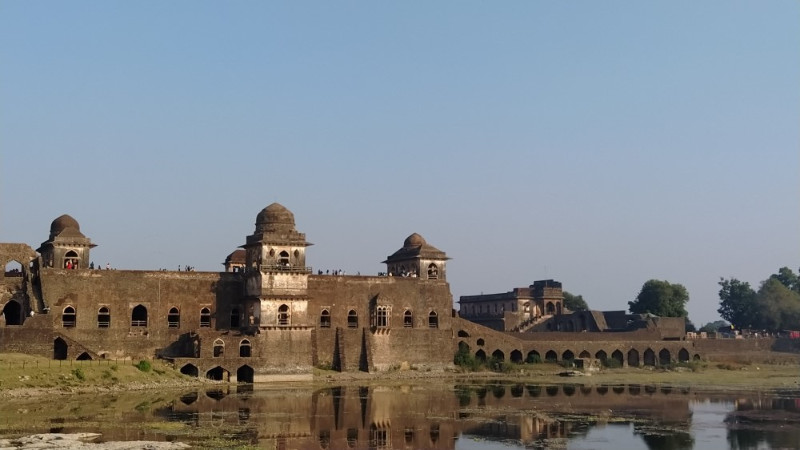
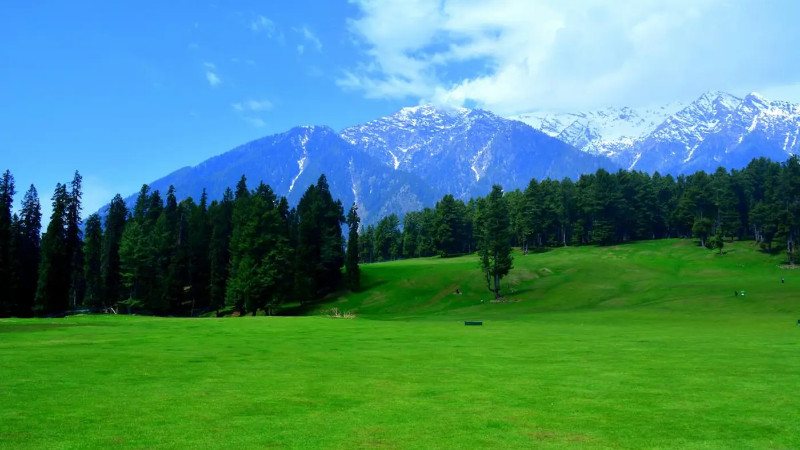

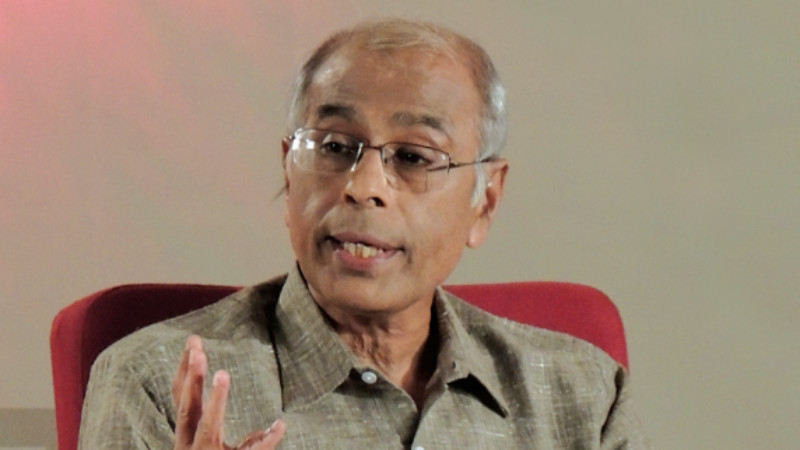
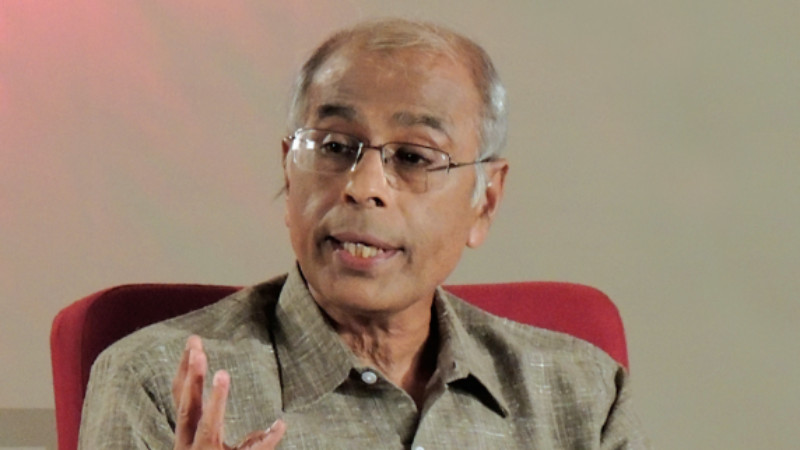
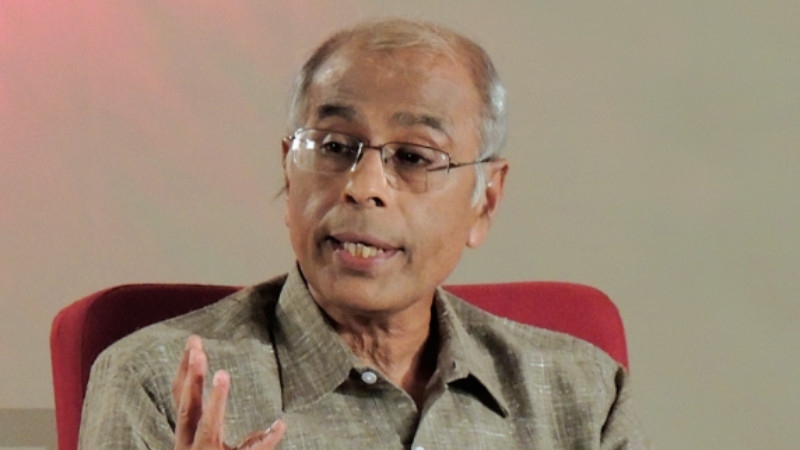

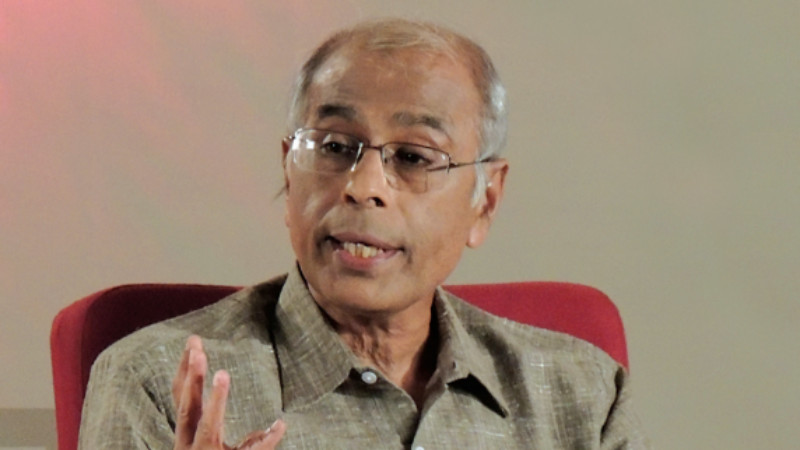

























Add Comment